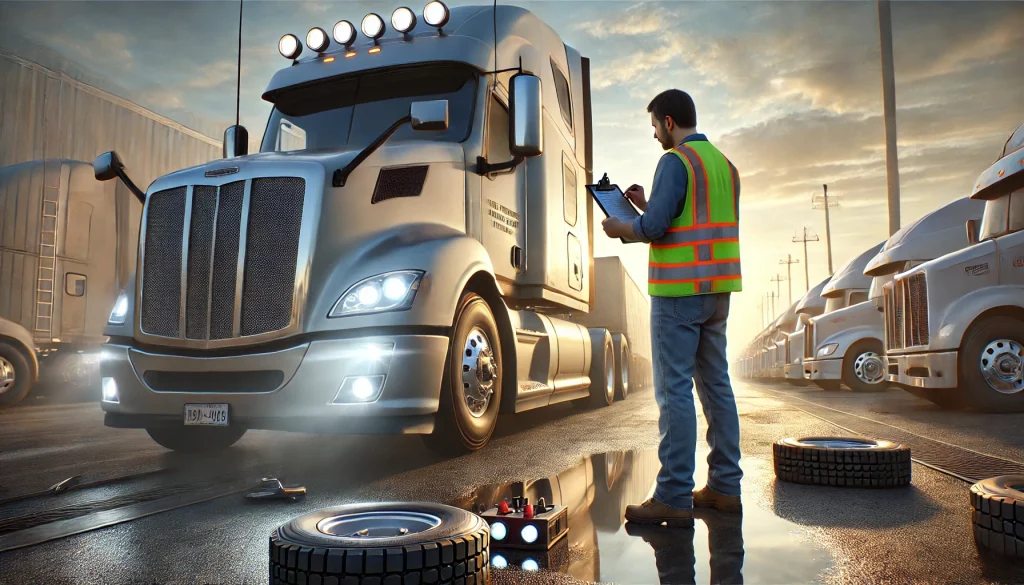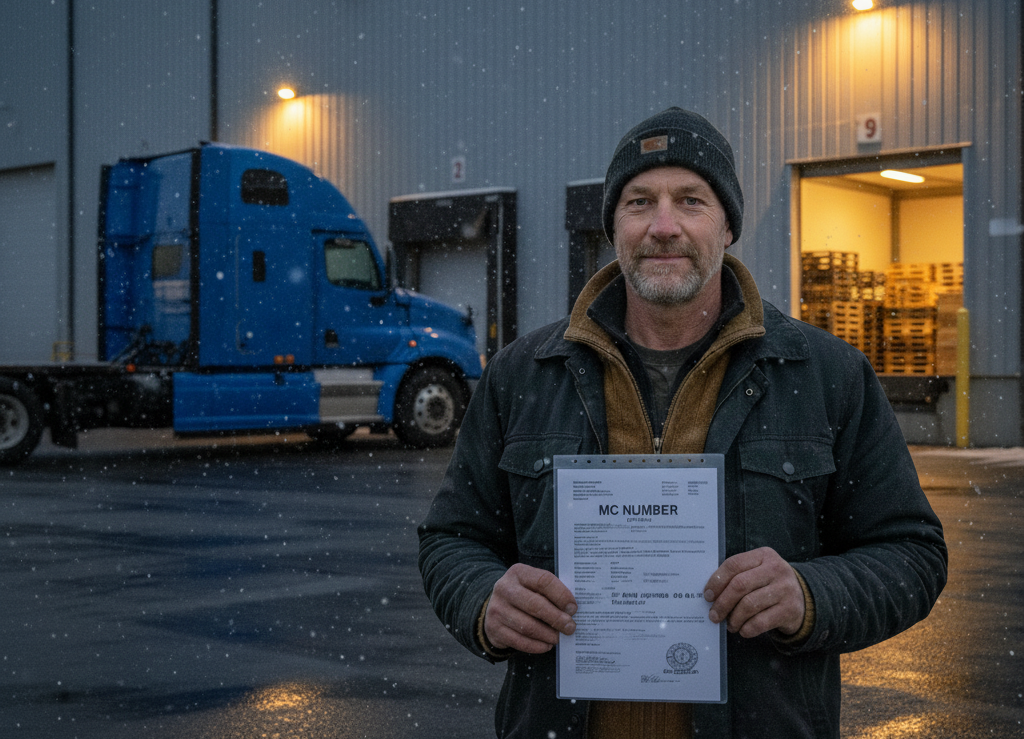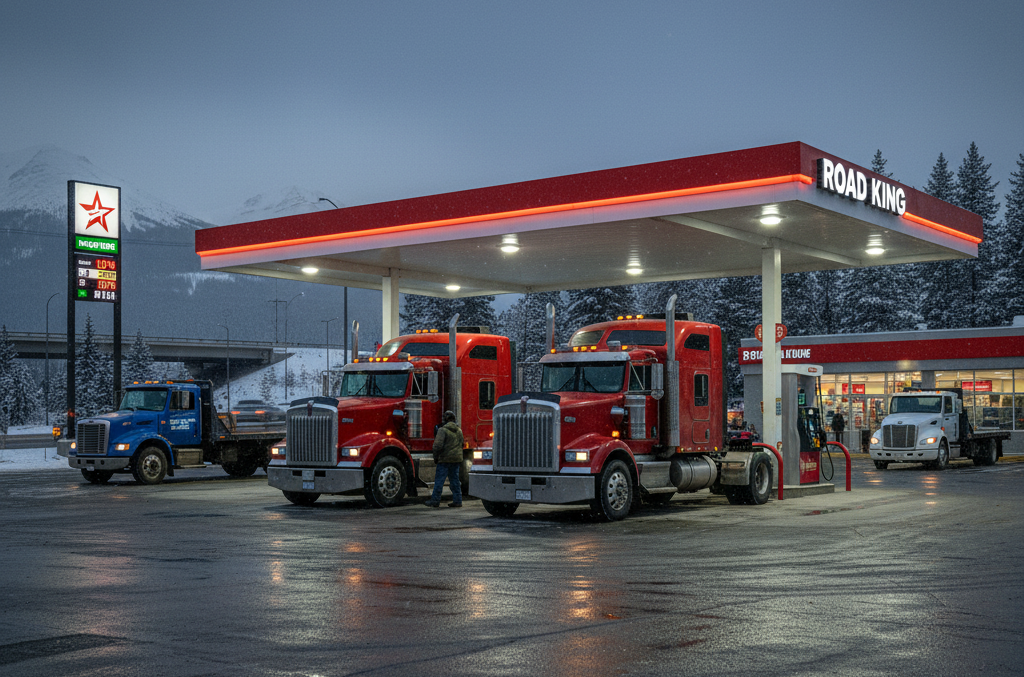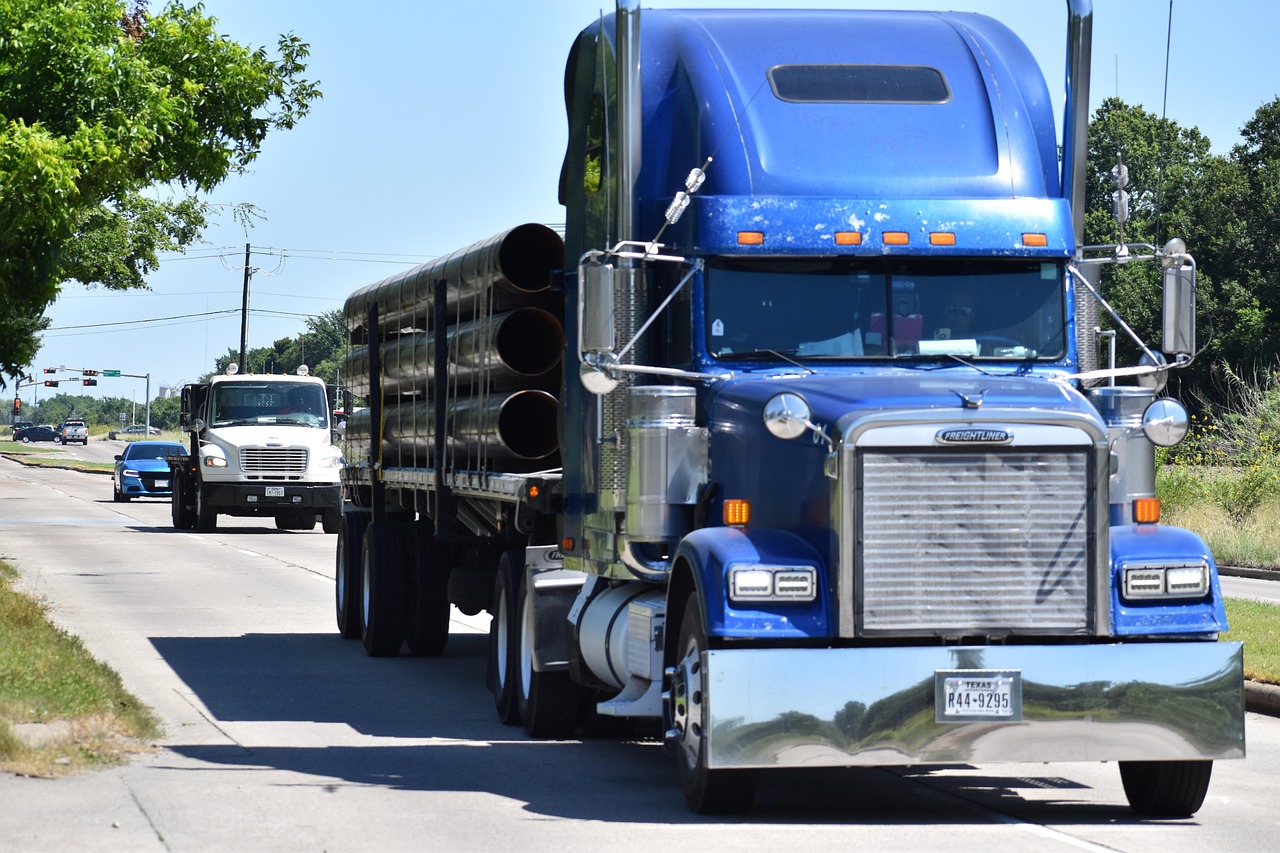What is a Pre-trip Inspection?
A pre-trip inspection is a mandatory safety procedure that truck drivers must perform before starting their route. This examination ensures that the vehicle is in proper working condition, reducing the risk of accidents, breakdowns, and violations. It is not only a best practice but also a requirement under the Federal Motor Carrier Safety Administration (FMCSA) regulations.
During a pre-trip inspection, drivers check key vehicle components. Usually, this includes examining brakes, tires, lights and reflectors, fluids, steering and suspension systems, and emergency equipment. The results of a pre-trip inspection must be documented in a Driver Vehicle Inspection Report (DVIR).
Benefits of a Thorough Pre-trip Inspection
A thorough pre-trip inspection provides several advantages. With a vehicle in top condition, drivers and fleet managers can improve the safety, efficiency, and cost-effectiveness of the trucking operations. The long-term benefits of regular and thorough checks include improved safety, reduced breakdowns, constant adherence to regulations, and extended vehicle life. These factors outweigh the time it takes to complete the inspection.
Enhanced safety. One of the primary benefits of CDL pre trip inspection checklists is ensuring safe driving. Careful brakes, steering, tires, and light inspections can help identify potential issues before any hazard occurs. For instance, checking the brake pedal and system for any leaks or wear helps reduce the risk of brake failure, which is one of the leading causes of accidents involving commercial trucks. A thorough inspection protects drivers, cargo, trucks, passengers, and other traffic participants.
Lower breakdown risk. A proactive approach to vehicle maintenance is one of the best ways to avoid costly breakdowns. By identifying potential issues early during inspections, such as low engine oil, worn tires, air compressor issues, or loose bolts, drivers can address them early and prevent severe problems. Roadside breakdowns can be even more costly, requiring towing and emergency repairs and leading to delays in deliveries. Thorough inspections save time and money for drivers and fleet operators.
Legal compliance. Pre-trip inspection is one of the safety regulations that commercial drivers must adhere to. Failing to conduct proper inspections can result in penalties, fines, and placing the vehicle out of service in some cases. Completing a thorough inspection before each trip ensures the truck’s compliance with the necessary safety standards, reducing the risk of violations during roadside inspections. Constant adherence to state and federal safety rules protects drivers from legal consequences and penalties.
Reduced delays. Identifying issues before they become major problems can prevent delays amid breakdowns on the road. Inspection can uncover small defects or signs of wear, allowing the truck driver to address the issue. This ensures smooth operations and helps maintain tight schedules.
Improved vehicle lifespan. Regular inspections and maintenance extend the lifespan of the vehicle. Addressing wear and tear early can reduce long-term damage to the vehicle. Trucks require consistent monitoring to ensure optimal performance. A properly maintained truck lasts longer and operates more efficiently.
15-minute Pre-trip Inspection Checklist

A well-organized pre-trip inspection can be completed in 15 minutes. This ensures your truck is ready for the road and complies with safety regulations. This quick but thorough check will help identify potential issues that could lead to breakdowns or accidents. We provide a detailed checklist to help you prepare for driving. With it, you can ensure efficient operations of your vehicle and reduce the risk of accidents, breakdowns, and delays.
1. Tire Inspection
Tires, especially steer tires, are critical for the safety and performance of any vehicle. Thus, they are one of the first things to inspect. Walk around the truck and trailer, checking all tires and each valve stem. You should check the following aspects:
Proper inflation. Inspect the air pressure to ensure that each tire is inflated to the recommended level and that the valve stem is secured. Insufficient or extensive air pressure can lead to poor handling, blowouts, and reduced fuel efficiency. You can use an air gauge for it.
Tread depth. Check the tread depth to ensure it meets legal requirements. Worn tires can lead to reduced traction, especially in wet or icy conditions.
Visible damage. Inspect the tires of your truck for cuts, punctures, bulges, or other signs of damage that could lead to tire failure.
Lug nuts. Ensure all lug nuts are present and tightened. Loose or missing nuts can cause the instability of the wheel.
Sidewalls. Look for cracks, splits, or signs of dry rot on the tire sidewalls. This can weaken the tire’s structure.
2. Lights and Reflectors Check
Good visibility is necessary on the road. This ensures safety for you and other drivers and reduces the risk of accidents. Before starting the trip, you should ensure all lights and reflectors are functioning and clean.
Headlights. Check low beams and high beams to ensure they are in proper condition.
Turn signals and brake lights. Test front and rear signals, as well as the brake lights. Ensure they are bright and easily visible.
Hazard lights. Activate the hazard lights and confirm they’re functioning correctly.
Clearance and marker lights. Check these on the truck and trailer. They should be visible and intact.
Reflectors. Ensure all reflectors are clean and not damaged. Proper reflectors help increase the vehicle’s visibility.
3. Brake Chamber Examination
Brakes failure is one of the most dangerous situations a driver can face. Thus, a thorough brake pedal inspection is necessary before every trip.
Air brake system. If your vehicle has air brakes, conduct an air brake check, including signs for any leaking air and the pressure gauge to ensure they hold pressure properly.
Brake pads and shoes. Inspect for wear and ensure there’s minimum brake pad thickness to engage the brakes efficiently. In addition, check the trailer parking brake.
Parking brake. Test the parking brake. They must hold the vehicle in place when engaged.
Brake lines and hoses. Look for visible leaks, cracks, or loose connections in the brake lines.
During this part of the CDL pre trip inspection process, you should also check the condition and functioning of the brake hose, brake drum, and a service brake.
4. Engine Inspection
The engine is the main component of any commercial vehicle. Make sure you check it during a pre-trip inspection procedure to avoid any breakdowns. For instance, you should inspect:
Belts and hoses. Check for signs of wear, cracks, or fraying. Ensure that hoses are attached properly and not leaking.
Leaks. Look under the vehicle for any signs of oil, coolant, or fuel leaks.
Fan and alternator. The fan blades must be intact and properly connected.
Fluid caps and dipsticks. Ensure that caps for oil, coolant, and other fluids are secure without any visible leaks.
5. Fuel Tank and Battery Check
Inspecting the fuel tank and battery ensures your truck will keep running without interruption. The check should include:
Tank. Ensure it’s properly mounted with no visible leaks. Look for signs of damage or rust.
Battery. Check it for corrosion on the terminals and ensure it is properly mounted.
6. Fluid Inspection
Proper fluid level is key to preventing mechanical issues, including poor power steering. You should check:
Oil level. Pull out the dipstick to ensure the oil is clean and at the correct level.
Coolant. Its level must be between the minimum and maximum markers. Low coolant can provoke excessive heat in an engine.
Transmission fluid. Check the transmission fluid for proper level and clarity.
Power steering fluid. Ensure the power steering fluid is at enough level to prevent steering difficulties.
Windshield washer fluid. Top off the washer fluid if needed to ensure clear visibility in case of rain or dirt.
7. Windshield
Clear visibility is critical for safe driving. Thus, the inspection before the trip must include:
Glass condition. Look for any cracks, chips, or damage that could impair visibility.
Windshield wipers. Check windshield wipers for wear or damage. Ensure they’re functioning correctly and making full contact with the windshield.
Visibility. Make sure the windshield is clean and free of dirt that could obstruct the view.
8. Emergency Kit
Every driver should have a complete and accessible emergency kit. This is one of the federal safety requirements that commercial drivers must comply with. The kit should include:
Reflective triangles. Ensure they’re present and easily accessible.
Fire extinguisher. Check its pressure gauge to ensure it’s charged and ready to use.
First aid kit. The first aid kit must be fully stoked, including such elements as bandages, antiseptics, and other necessary items.
Basic tools. Include basic tools for minor repairs. This includes wrenches, pliers, and screwdrivers.
9. Mirrors with Swivel Mounts
Mirrors are necessary elements for safe driving. They simplify safe lane charges and backing up.
Mirror condition. Make sure all mirrors are clean and free of cracks or damage.
Adjustment. Check if the mirrors are properly aligned and adjust them if needed. This ensures the driver’s optimal visibility.
10. Coupling System Assessment
A secure coupling system is vital for keeping the trailer safely attached to the track.
Fifth wheel and kingpin. Ensure the fifth wheel and kingpin are properly secured.
Locking jaws. Check the locking jaws to ensure they are firmly in place.
Safety chains. They must be appropriately connected to provide a secure backup.
11. Cabin Inspection
The truck’s cabin houses many of the commercial vehicle’s essential controls. Thus, it’s necessary to inspect:
Dashboard. Ensure there are no warning lights, such as abs light, on the dashboard that indicate issues with the engine or other vehicle components.
Check that all gauges, including fuel, oil pressure, and temperature gauges, are functioning properly.
Steering wheel and seatbelt. Test them for smooth operation and ensure they’re functional and free of damage.
Horn and heater/AC. Test the horn, heater, and air conditioning to ensure they’re in good condition.
12. Trailer Examination
This pre trip vehicle inspection part is important, as the trailer carries your load. You should:
Doors and latches. Ensure all trailer doors open and close securely and latches function properly.
Trailer body. Look for any signs of damage, such as dents, cracks, or rust. Remember to check the trailer axle.
Cargo securement. Verify that the cargo inside the trailer is properly secured to prevent shifting during transit.
13. Back of the Truck Inspection
Last but not least is the inspection of the back of the truck.
Lights and reflectors. Ensure the rear lights, brake lights, and tail lights are functioning properly. The license plate lights must also work properly.
Mud flaps. Inspect the mud flaps to ensure they’re intact and properly positioned.
Rear doors. The rear doors must be securely closed and locked before departure.
Reporting Pre-Trip Inspections
After completing a pre-trip inspection test, drivers must report the result to ensure compliance with safety regulations. Typically, this involves filing a Daily Vehicle Inspection Report (DVR) or a similar form, depending on company policies and state or federal regulations. Proper and accurate reporting proves that the inspection was completed and all issues are handled correctly.
The common reporting methods include paper forms, digital forms, or mobile apps and submitting them to fleet managers or dispatchers.
Drivers should record the condition of the vehicle and note any defects or issues. The report must include information on the condition of the tires, brakes, lights, and other critical areas inspected. This is required even if no problems are found.
In case of any issues with a truck or its components, commercial drivers should immediately report them to the fleet manager or maintenance team. Depending on the severity of the issue, the commercial vehicle may need to be repaired before the road.
Completing and submitting pre-trip inspection reports is required by authorities. Failure to report or falsify inspections leads to fines, penalties, and increased liability in case of an accident.
Common Issues Found During Pre-Trip Inspections
During pre-trip inspections, drivers may identify a range of issues that could pose hazards to the vehicle’s safety or performance. Regular inspections and maintenance address problems promptly, ensuring that the truck is road-ready. Some of the most common issues that may be found include:
Tire problems. Worn tread, underinflated tires, or visible damage are frequently found during tire inspections. This can lead to blowouts or poor handling, especially on long hauls or in adverse weather conditions.
Brake defects. Malfunctioning brake pads are a serious safety risk. Any defects, such as brake pad wear or leaking air brake system, must be addressed immediately.
Light malfunctions. Burned-out headlights, brake lights, turn signals, or hazard lights are often reported. These issues reduce visibility for the driver and make it harder for other drivers to see the truck.
Fluid leaks. Drivers often spot oil, coolant, or transmission fluid leaks during the inspection of the engine compartment. They can indicate more serious mechanical issues and should be fixed before the truck is driven.
Conclusion
Performing a thorough pre trip inspection ensures safety, legal compliance, and operational efficiency. With a reliable trip inspection checklist, drivers can identify small issues before they lead to serious and costly breakdowns.
Reporting problems immediately and addressing them ensures the vehicle is in optimal condition and reduces the chances of accidents or breakdowns. In addition, CDL pre-trip inspection helps avoid penalties and maintain legal compliance, contributing to a smoother and safer driving experience.
Sometimes, a trip inspection checklist can advise using special equipment, such as air pressure gauges to check the tire inflation or a skid plate to prevent damage to the underside of the vehicle.




